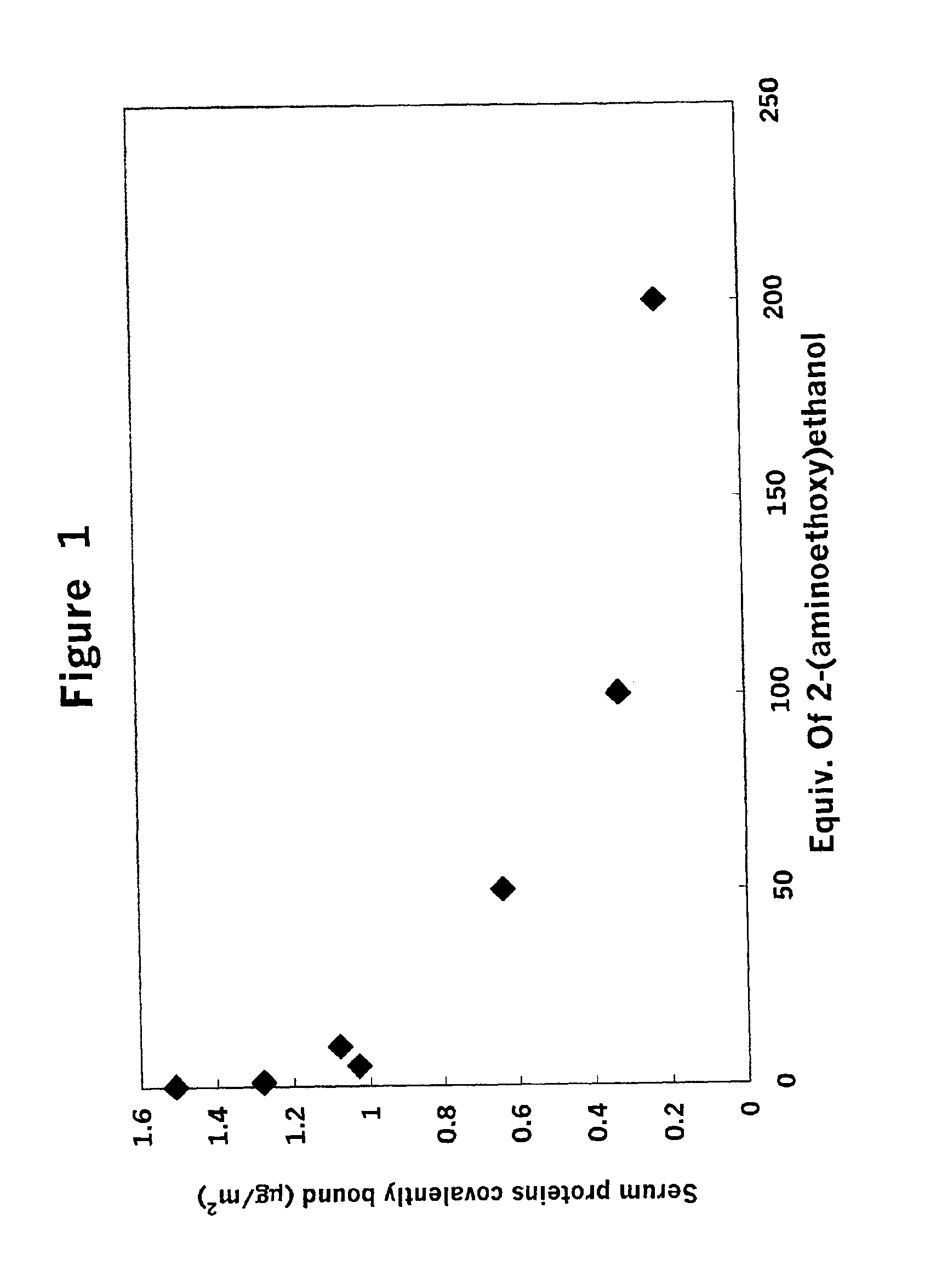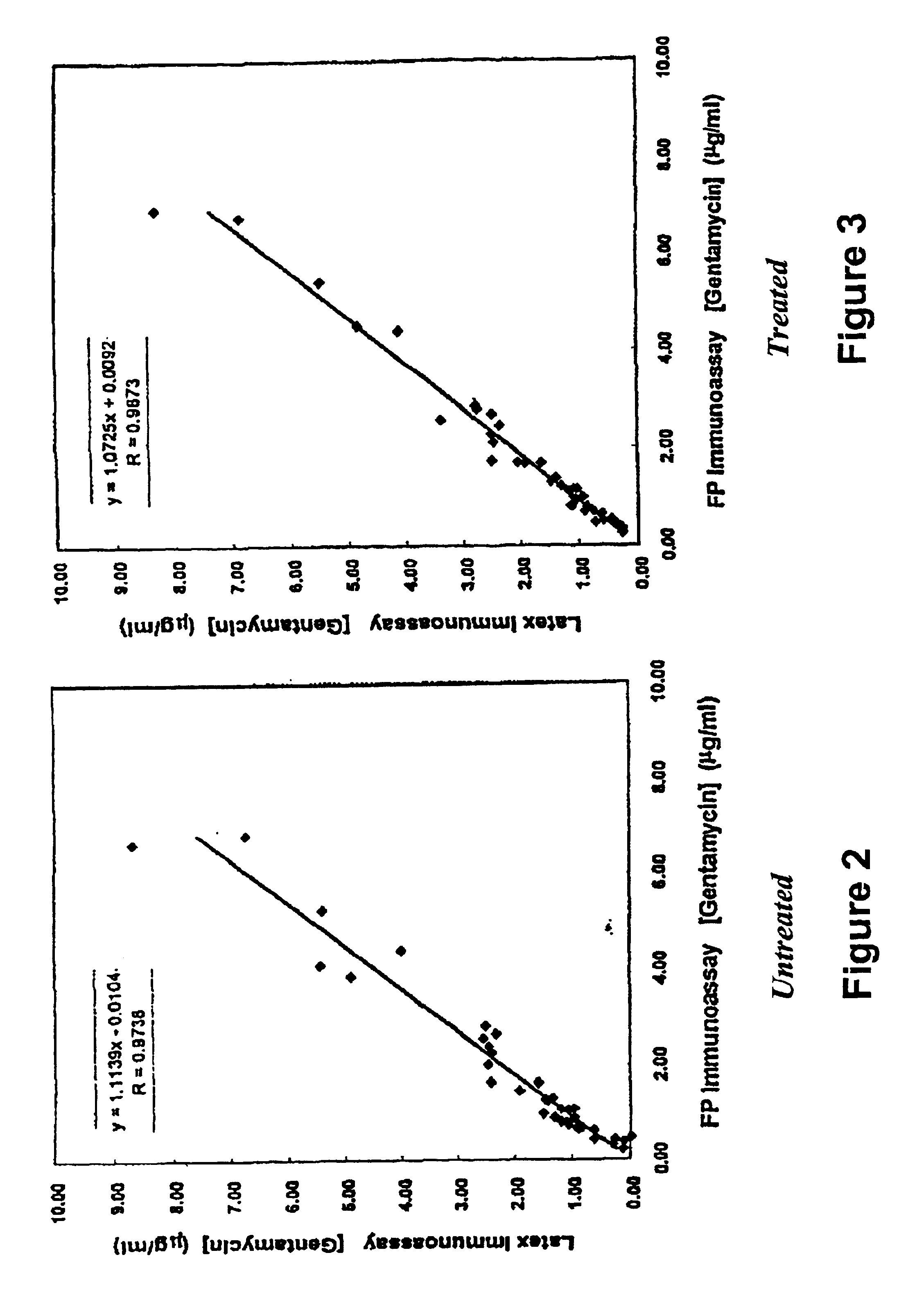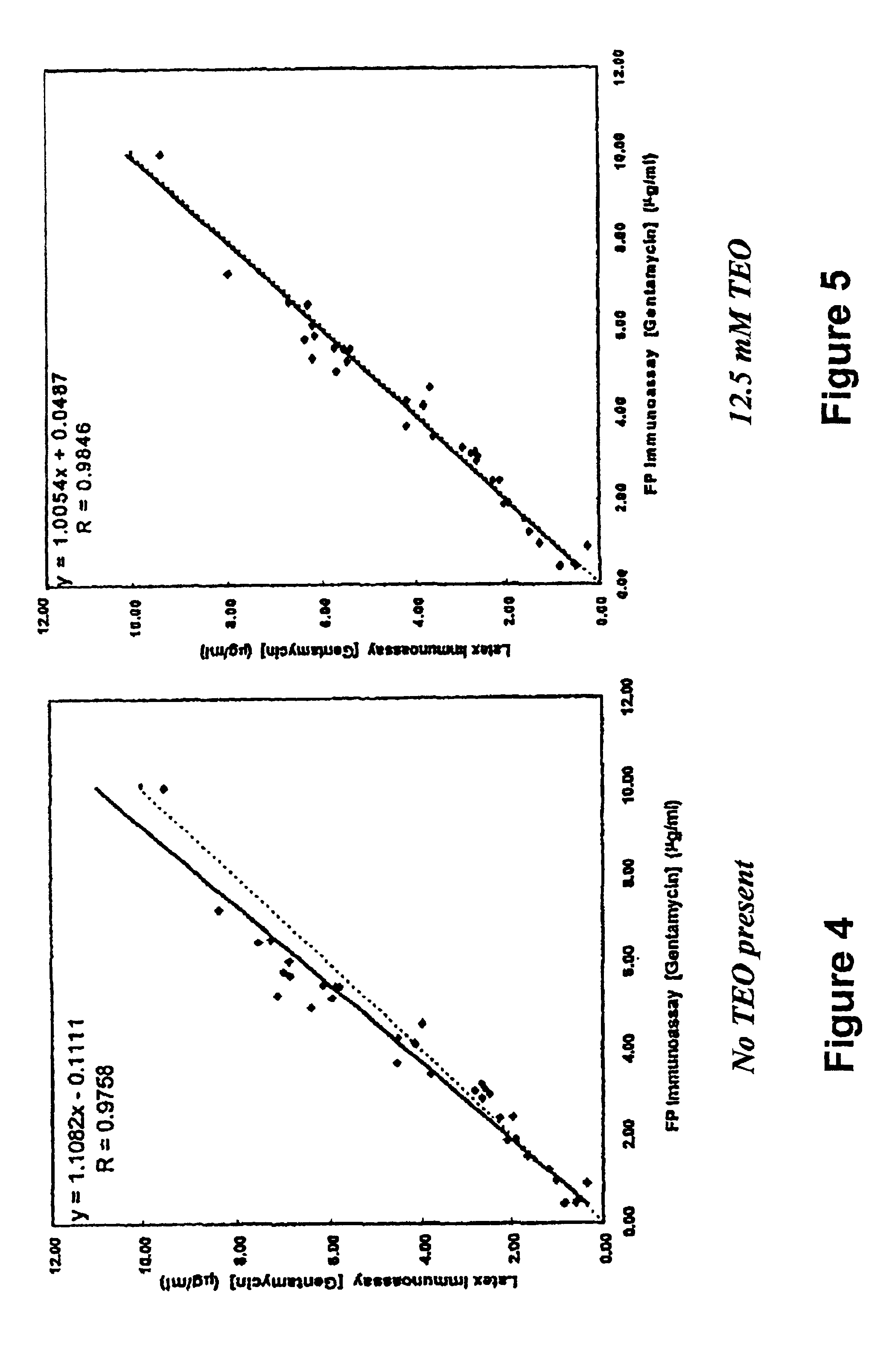Particles for immunoassays and methods for treating the same
a technology of immunoassays and particles, applied in the field of particles for immunoassays and methods for treating the same, can solve the problems of inaccurate correlation of agglutination response, false positive or false negative, and particle agglutination
- Summary
- Abstract
- Description
- Claims
- Application Information
AI Technical Summary
Benefits of technology
Problems solved by technology
Method used
Image
Examples
example 1
Effect of Treatment with Amine on Covalent Binding and Physical Adsorption of Serum Components to Activated Latex
[0056]To a suspension of 1% (w / v) latex in 10 mM 2-morpholinoethane-sulfonic acid buffer (MES) having a pH of 5.0 and containing 21 millimolar (mM) N-hydroxysuccinimide (NHS), was added a fresh aqueous solution of 1-ethyl-3-(3-dimethylaminopropyl) carbodiimide (EDC), to a concentration of 21 mM. After incubation at room temperature for 2 hr, the suspension was spun down (15,000×g, 30 min) and the latex resuspended in 50 mM 3-morpholino-propanesulfonic acid buffer (MOPS) pH 8.0. To aliquots of this suspension was added 2-(aminoethoxy)ethanol (AEO) (in 50 mM MOPS buffer pH 8.0) to concentrations of 0 M, 0.002 M, 0.011 M, 0.021 M, 0.105 M, 0.210 M, and 0.420 M. The final volume of each of these suspensions was 1.1 ml containing 1% (w / v) latex. After incubation at room temperature for 2 hr, the latex was centrifuged (15,000×g, 30 min), resuspended in 1 ml of 50 mM MOPS buffer...
example 2
Effect of Treatment with Amine on Immunoassay Performance
[0060]To a 30 ml suspension of 1% (w / v) latex in 10 mM MES buffer at pH 5.0 was added 2.86 ml of a freshly prepared aqueous solution of 0.22 M NHS, followed by addition of 2.42 ml of a freshly prepared aqueous solution of 0.26 M EDC. The activation reaction was allowed to proceed for 2 hr at room temperature before collecting the latex by centrifugation (15,000×g, 45 min). The pellets were resuspended in 15 ml of 50 mM MOPS buffer at pH 6.4. To this suspension was added 15 ml of 50 mM MOPS buffer at pH 6.4 containing 50 mg / ml BSA and 0.30 mg / ml gentamicin monoclonal antibody M-12A9-IgG. The suspension was incubated at room temperature for 2 hr to effect sensitization. Excess IgG and BSA were removed by centrifugation (15,000×g, 30 min), and the pellets were resuspended in 15 ml of 50 mM MOPS buffer at pH 8.0. To this suspension was added 15 ml of 50 mM MOPS buffer at pH 8.0 containing 0.84 M AEO, followed by incubation at room...
example 3
Immunoassays of Negative Samples
[0062]Immunoassays were also run on a set of thirty serum samples which tested negative for gentamicin by the Roche FP immunoassay. The mean apparent gentamicin concentration for this sample set was −0.03 μg / ml with a standard deviation of 0.17 μg / ml for the quenched latex, compared to values of −0.09 μg / ml and 0.31 μg / ml respectively for the unquenched latex.
PUM
| Property | Measurement | Unit |
|---|---|---|
| Ratio | aaaaa | aaaaa |
Abstract
Description
Claims
Application Information
 Login to View More
Login to View More - R&D
- Intellectual Property
- Life Sciences
- Materials
- Tech Scout
- Unparalleled Data Quality
- Higher Quality Content
- 60% Fewer Hallucinations
Browse by: Latest US Patents, China's latest patents, Technical Efficacy Thesaurus, Application Domain, Technology Topic, Popular Technical Reports.
© 2025 PatSnap. All rights reserved.Legal|Privacy policy|Modern Slavery Act Transparency Statement|Sitemap|About US| Contact US: help@patsnap.com



